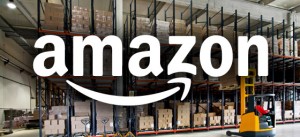In Response to: The Reason McDonald’s is Failing

Image taken from here.
McDonald’s sales has seen significant decrease in the past year; in her blog, Latasha Ellis-Cobb expressed her views on the failing fast food giant. She concluded three main reasons behind the drop in sales, in which I agree for the most part. I would like to add to or contradict her opinions on this issue, for it is interesting to analyze a brand that I am familiar with since the age of five.
- The competition is doing it better
McDonald’s customer service has slipped up, while its competition, an example given by Ellis-Cobb was Chick-fil-A, is providing excellent services while emphasizing on community engagement. McDonald’s urgently needs to evaluate its employees’ and managers’ performance, and devise strategies to achieve higher customer satisfaction level. My suggestion is to have a feedback box in each store where customers can conveniently submit feedbacks. This will save customers’ time and trouble to find the feedback page online, as well as give managers up to date pointers.
- They lost their ingenuity
I don’t really agree with Ellis-Cobb on this. I believe that as long as my meal’s quality is not compromised, McDonald’s wide range of varieties actually saves me the time to run down different stores to get what I want. Although other players in the food industry might be angry at McDonald’s for ripping off their formulas, as a consumer, I don’t mind much.
- Bad reaction to bad PR
Indeed the public relations of McDonald’s has had a nightmare “from Morgan Spurlock’sSuper Size Me to America’s war on childhood obesity to the video of Chinese food suppliers using unsanitary practices.” As if this year has not been troublesome enough for the fast food giant, the firm now “appears to be caught in the economic crossfire between Moscow and Washington.” I don’t really have any insights to share on PR, but oh boy, did McDonald’s have a tough year or what.
With the trend of healthy eating gaining more momentum, I don’t think it is unreasonable to see a gradual decline in the sales of fast food industry. However, the problem at hand that McDonald’s needs to deal with is the quality of customer service and its public relations.
Works Cited
Ellis-Cobb, Latasha. “The Reason McDonald’s Is Failing.” World’s Largest Professional Network. 10 Nov. 2014. Web. 11 Nov. 2014. <https://www.linkedin.com/pulse/article/20141110132214-347432522-the-reason-mcdonald-s-is-failing?trk=tod-posts-post1-ptlt>.
Matlack, Carol. “Putin’s Latest Target: More Than 200 Russian McDonald’s.” Bloomberg Business Week. Bloomberg, 20 Oct. 2014. Web. 11 Nov. 2014. <http://www.businessweek.com/articles/2014-10-20/putins-latest-target-more-than-200-russian-mcdonalds>.
Yeomans, Matthew. “#FAIL: Authenticity Is the Key to Avoiding Social Media Screw-ups.” #FAIL: Authenticity Is the Key to Avoiding Social Media Screw-ups. Guardian, 8 Mar. 2012. Web. 11 Nov. 2014. <http://www.theguardian.com/sustainable-business/authenticity-social-media-sustainability-communications>.




